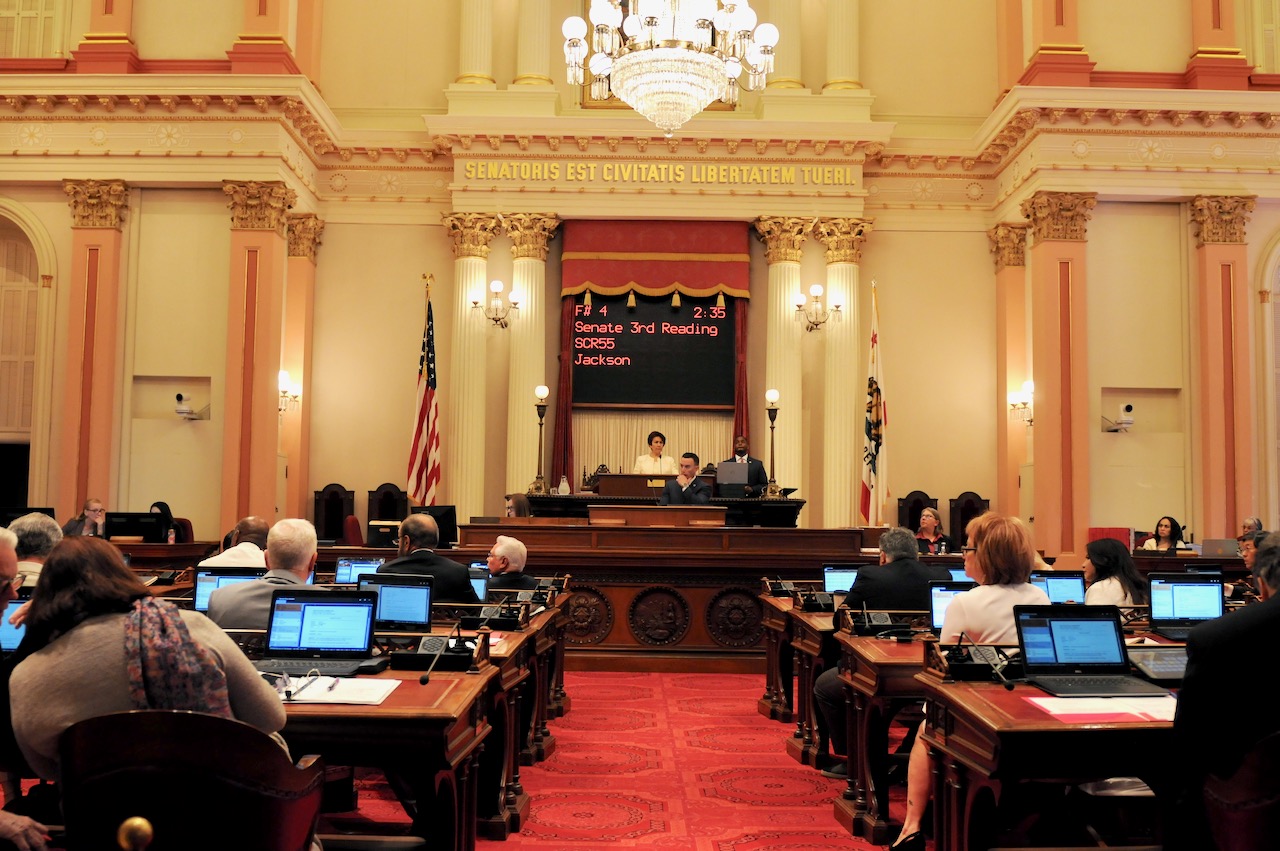
California State Capitol Rotunda. (Photo: Katy Grimes for California Globe)
Frequently Asked Questions about Comparing Federal and State Legislative Branches
By Chris Micheli, May 28, 2024 2:30 am
Where is the Congress established in law? The Constitution of the United States (Article I, Sections 1-10) spells out the authority of Congress to make laws.
Is the Congress of power limited? Congress’ authority cannot conflict with the 10th Amendment to the Constitution. The 10th Amendment to the U.S. Constitution provides: “The powers not delegated to the United States, nor prohibited by it to the states, are reserved to the states respectively, or to the people.”
Where is the California Legislature established in law? The California Constitution (Article IV) and the state Government Code (Sections 9000-10606) establish the Legislature, as well as some of the procedures by which legislation is proposed, considered, and acted upon at the state level.
Do political parties play a role in the legislative branch? In both Congress and the Legislature, the political parties and the party leaders dictate most of the legislative process, as well as the ultimate outcome of legislation. This is due to the fact that the majority party enjoys a majority of members on the committees (thus generally ensuring they control the fate of legislation) and on the Floors because the vast majority of bills require a simple majority vote for passage.
How does the U.S. Congress conduct its business? Both the U.S. Senate and the U.S. House of Representatives use an elaborate system of committees and subcommittees to consider legislation and the federal budget. The Senate has about 16 standing committees and nearly 100 subcommittees, while the House has roughly 22 standing committees and nearly 150 subcommittees. These committees and subcommittees are where legislation is heard, amended, passed to the floor, or held in committee.
How are legislative committee members selected? Given the size of Congress (with 100 Senators and 435 Representatives), there is a heavy reliance on seniority and expertise of members in determining committee membership. The selection of committee and subcommittee chairs is determined by party leaders. The California Legislature relies less on seniority, but certainly takes into account the expertise and political needs of its members to determine committee composition.
What are the vote requirements in Congress? A majority vote is required for most actions of the U.S. House and Senate, as well as its committees and subcommittees. U.S. House and Senate rules regarding debate and bringing matters to a vote often require supermajority votes (usually three-fifths or two-thirds). The most prominent example occurs within the U.S. Senate where rules provide that debate is virtually unlimited.
How are the federal and state budgets determined by the legislative branch? Through the annual federal and state budgets, Congress and the Legislature can provide or remove funding and direct executive branch agency activities through budget control language. Congress can direct one of its many control agencies (GAO, CBO, or legislative committees) and the Legislature can do the same (through the LAO, State Auditor, or legislative committees) to investigate the agency’s actions to regulate or implement laws.
How does the Legislature consider legislation? Both the California Senate and Assembly use a committee system. The various committees (currently 22 standing committees in the Senate and 32 standing committees in the Assembly), the number of members on each committee, and other details are addressed in the respective Rules of the Assembly and Senate. Most bills go through two committees in each house of the Legislature: a policy committee and a fiscal committee.
How are bills processed in the California Legislature? In the committees of the Legislature, the general practice is to work out language changes prior to the hearing so that hearings are only a brief debate on the merits of the bill between proponents and opponents, nominal discussion by committees, and a vote to either pass or defeat the bill. This is often due to the time limits of committee hearings and the sheer volume of bills that are considered and acted upon in the California Legislature.
How are bills processed in the U.S. Congress? In Congressional committees, their hearings are called “mark-up” sessions because the committee members actually debate and amend (or “mark-up”) legislation in their committees rather than just debate the measures. Congressional committees engage in lengthy committee hearings to actually debate specific language changes to federal legislation. Their process of amending bills is open and part of the public hearing process.
What does productivity look like in the legislative branch? In looking at the productivity of these two legislative bodies of our federal and state governments, there were 12,298 bills and resolutions introduced in the 112th Congress, but only 238 measures (1.9%) became law. At the federal level, rarely do more than 5% of bills introduced in a session actually become law. On the other hand, in California, there are usually about 4,500 bills introduced during the two-year legislative session and usually between 1,800 and 2,000 bills are signed into law, more than one-third of them.
- General Provisions Related to Family Law Support - December 13, 2025
- Petitions for Forming Harbor Districts in California - December 12, 2025
- Child Support Obligations - December 12, 2025




